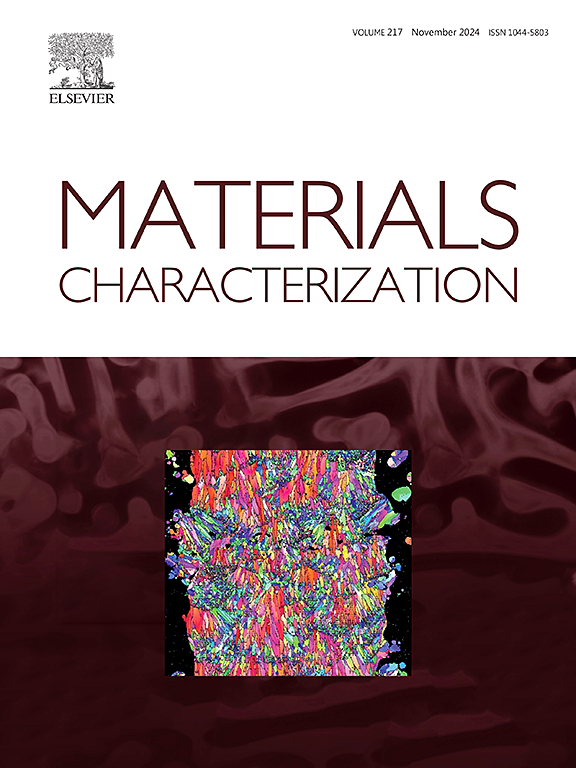Corrosion studies on Tang dynasty opaque glaze celadon excavated from Qiong kiln, Sichuan, China
IF 4.8
2区 材料科学
Q1 MATERIALS SCIENCE, CHARACTERIZATION & TESTING
引用次数: 0
Abstract
As a typical representative of ancient southern Chinese folk kilns, the Qiong kiln, the firing process, and the corrosion behavior of its opaque glaze celadon are of great significance in revealing the deterioration mechanism of Indigenous ceramic materials. In this study, eight pieces of Tang dynasty opaque glaze celadon excavated from the Qiong kiln's Shifangtang kiln site were taken as the research object, and the glaze corrosion morphology and mechanism under the synergistic effect of glaze corrosion characteristics, physical composition and burial environment were systematically investigated by means of the super depth-of-field microscope, scanning electron microscope-energy spectroscopy (SEM-EDS), Raman spectroscopy, and optical coherence tomography (OCT) techniques. The results show that the corrosion behavior of the glaze layer is significantly affected by the composition of raw materials and the firing process: the incompletely fused quartz particles and precipitated augite crystals become the preferred corrosion sites due to the difference in chemical stability at the interface with the glass phase, which leads to the dislodgement of the crystals and the formation of honeycomb-shaped corrosion pits. The geometrical characteristics of the corrosion pits (increased specific surface area compared to the original glaze) accelerated the interfacial ion-exchange reactions while providing deposition channels for inorganic colloids from the environment to form hollow spherical silicate crusts. This study reveals the multi-scale synergistic corrosion mechanism of the crystal phase - bubble pits - iron deposition material in Qiong kiln opaque glaze celadon, which provides a scientific basis for the development of a targeted cultural relics protection strategy.
作为中国古代南方民窑的典型代表,邛窑及其烧造工艺和不透明釉青瓷的腐蚀行为对揭示土著陶瓷材料的劣化机理具有重要意义。本研究以邛窑十方堂窑址出土的八件唐代不透明釉青瓷为研究对象,通过超景深显微镜、扫描电子显微镜-能谱仪(SEM-EDS)、拉曼光谱和光学相干断层扫描(OCT)技术,系统研究了釉面腐蚀特征、物理成分和埋藏环境协同作用下的釉面腐蚀形态和机理。结果表明,釉层的腐蚀行为受到原料成分和烧制工艺的显著影响:由于与玻璃相界面的化学稳定性不同,未完全熔融的石英颗粒和析出的奥氏体晶体成为首选腐蚀点,导致晶体脱落,形成蜂窝状腐蚀坑。腐蚀坑的几何特征(与原釉相比比表面积增大)加速了界面离子交换反应,同时为环境中的无机胶体提供了沉积通道,从而形成中空的球形硅酸盐结壳。该研究揭示了琼窑不透明釉青瓷中晶体相-气泡凹坑-铁沉积物的多尺度协同腐蚀机理,为制定有针对性的文物保护策略提供了科学依据。
本文章由计算机程序翻译,如有差异,请以英文原文为准。
求助全文
约1分钟内获得全文
求助全文
来源期刊

Materials Characterization
工程技术-材料科学:表征与测试
CiteScore
7.60
自引率
8.50%
发文量
746
审稿时长
36 days
期刊介绍:
Materials Characterization features original articles and state-of-the-art reviews on theoretical and practical aspects of the structure and behaviour of materials.
The Journal focuses on all characterization techniques, including all forms of microscopy (light, electron, acoustic, etc.,) and analysis (especially microanalysis and surface analytical techniques). Developments in both this wide range of techniques and their application to the quantification of the microstructure of materials are essential facets of the Journal.
The Journal provides the Materials Scientist/Engineer with up-to-date information on many types of materials with an underlying theme of explaining the behavior of materials using novel approaches. Materials covered by the journal include:
Metals & Alloys
Ceramics
Nanomaterials
Biomedical materials
Optical materials
Composites
Natural Materials.
 求助内容:
求助内容: 应助结果提醒方式:
应助结果提醒方式:


